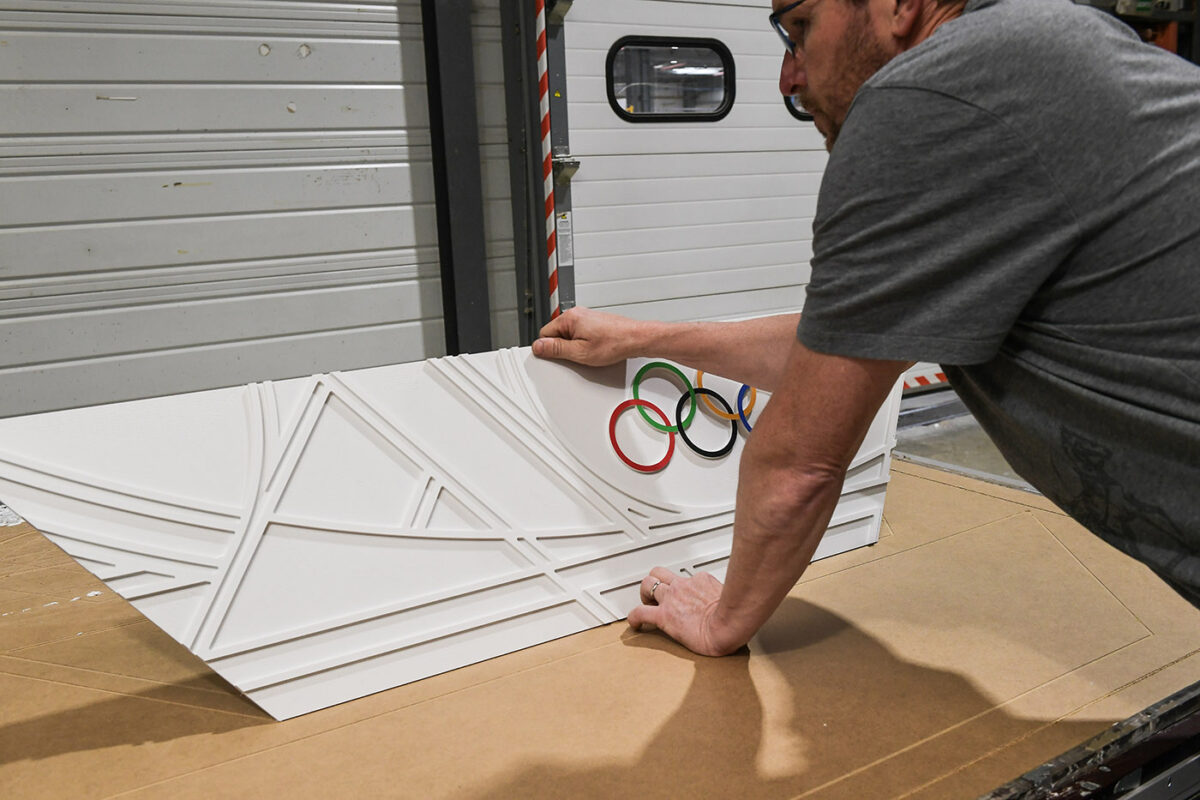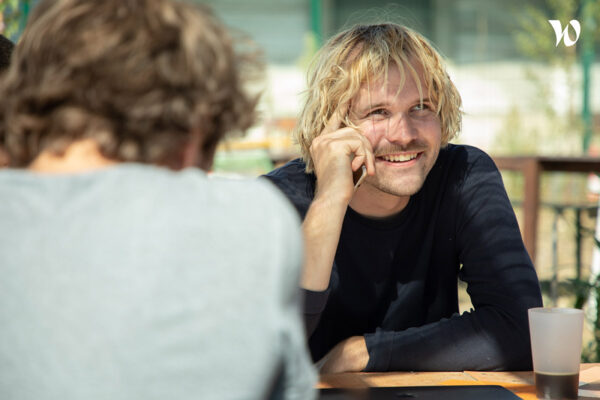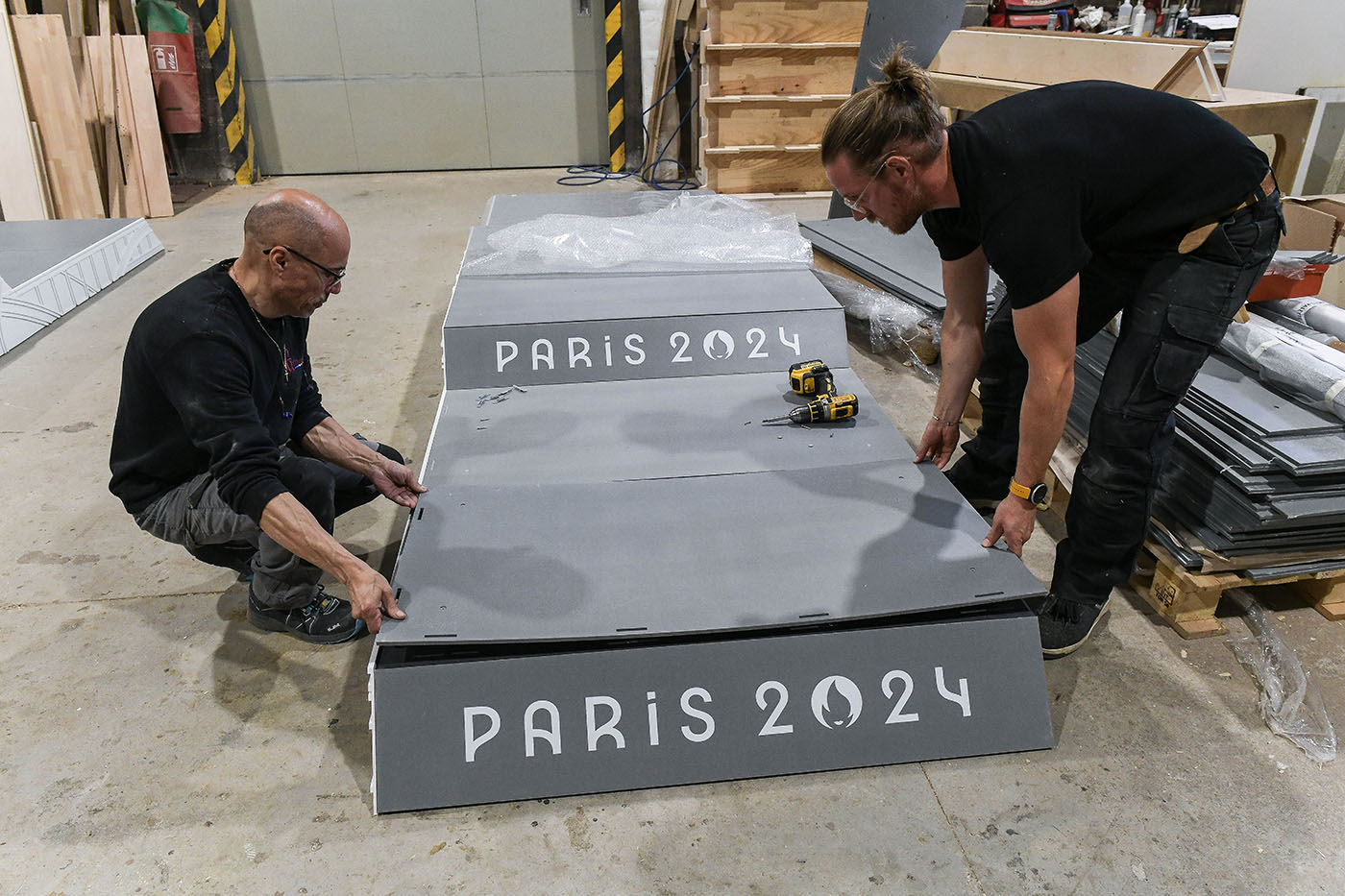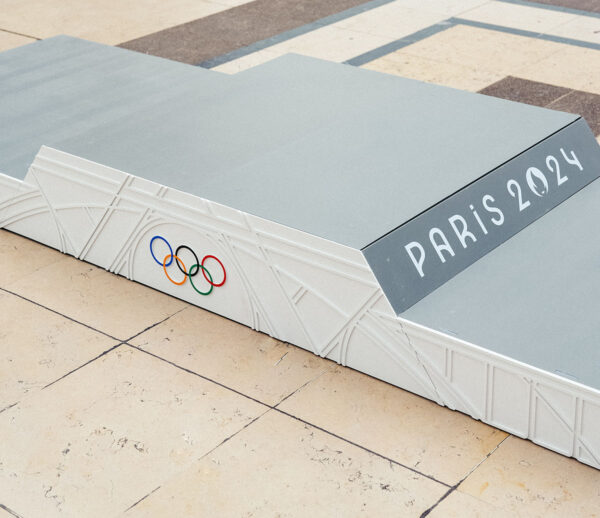Olympics to Use Recycled HDPE in Seats and Podiums

2024 Paris Games organizers aim to make these ‘the greenest Olympics’.

Marius Hamelot, co-founder of Le Pavé. All images courtesy of Le Pavé
First, arena seats. Now, award podiums. Le Pavé, a small French industrial startup, is playing an outsize role in creating positive uses for recycled plastics at the upcoming Paris Games. Last year the Paris-based company won a contract to provide 11,000 seats to two Olympic arenas, the Arena at Porte de la Chapelle in Paris and the Olympic Aquatic Centre in Seine-Saint-Denis. Those seats, made from recycled HDPE, consumed about 100 metric tonnes of waste plastic. They installed them this spring.
The firm recently agreed to produce 68 Olympic and Paralympic award podiums made using French wood and 100 percent recycled HDPE. The podiums –– constructed with plastic panels attached to a plywood framework –– will consume some 18 metric tonnes of waste plastic. These applications offer durable end uses for single-use waste plastics.
The Greening of the Olympics

Partner firm Les Établissements Giffard assembled the recycled plastic panels by mounting them onto plywood frames.
The organizers of the Olympic Summer Games—which will take place July 26-Aug. 11 in Paris—have pledged to make them the greenest Olympics yet.
Previous Summer Games emitted an average of 3.5 million tonnes of carbon dioxide. Paris 2024 considered this as its starting point. The organizers have developed a pioneering tool to gauge its carbon footprint and are applying a methodology to measure and control its emissions. Their goal is to halve the emissions from the Games while offsetting even more CO2 emissions than they generate.
Le Pavé and its Patented Process

The award podiums consist of modular recycled HDPE and wood segments and range in length from 4 to 33 meters, depending on the discipline.
Marius Hamelot co-founded Le Pavé with longtime friend Jim Pasquet in 2018. In 2019, they patented thermal compression molding technology for the building sector, and last year, they secured a patent for the process itself.
The company has a plant in the northeastern Paris suburb of Aubervilliers, where it produced the molded panels used to make 11,000 seats for the two Olympic arenas. It says it plans to open a second factory in Bourgogne, in east-central France, later this year.
A Local Network for Plastic Waste Collection
Le Pavé collaborates with several partners, all situated within approximately 60 miles of Paris. Three local companies form a network that collects waste plastic from Parisian neighborhoods and French coastlines and beaches.
To achieve an even distribution of colors, the reclaimed plastic chips are blended carefully. Using customized machines, the mixed materials are then heated and compressed.
The resulting panels, produced through a thermal compression molding process, are typically black or white with colorful flecks. “We didn’t use a regular screw on the extruder,” Hamelot explains, “because we want the color to show through.” This aesthetic choice underscores the recycled nature of the materials.
After molding, the panels are smoothed and sanded before being sent to partner companies in France for cutting and assembly. These panels can be sawn, drilled, sanded, and thermoformed, making them versatile for various applications. To ensure quality, Le Pavé employees work in two of their partners’ molding plants. Additionally, Global Concept, another partner, cuts seats from these panels.
And the Award Goes to …
For the award podiums, Hamelot and his team are again working with Global Concept, which is doing the machining, as well as with a joinery specialist called Les Établissements Giffard, which is doing the assembly.
For individual discipline awards, the podiums use three modules of recycled HDPE blocks to create a 4-meter-long podium. The longest podium –– for the football awards –– measures 33 meters long, using 43 modules.

The Paralympic podiums include a ramp to enable easy access.
A Le Pavé spokesman said the raw material for the podiums consists primarily of post-industrial scraps from package production, mostly from French food companies, as well as from ocean-bound plastic collected along France’s coastline and beaches.
For the podium, the organizers chose neutral colors –– the bas-relief façade is white and the top is grey, to reflect the image of zinc roofs in Paris.
Le Pavé started in France but has global ambitions. It wishes to expand its concept worldwide by working with local partners in multiple countries and becoming a leader in sustainable materials.
